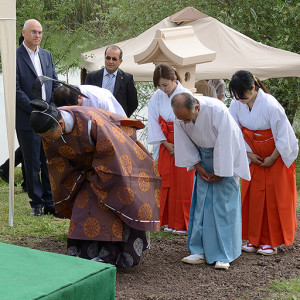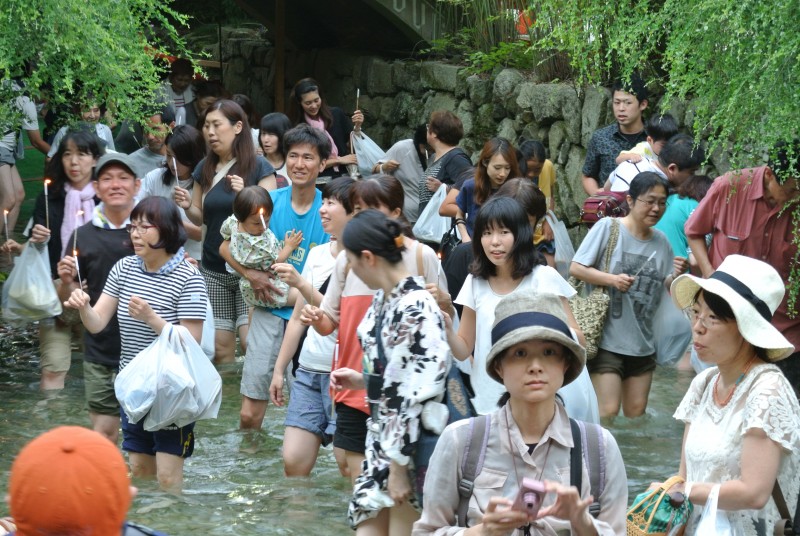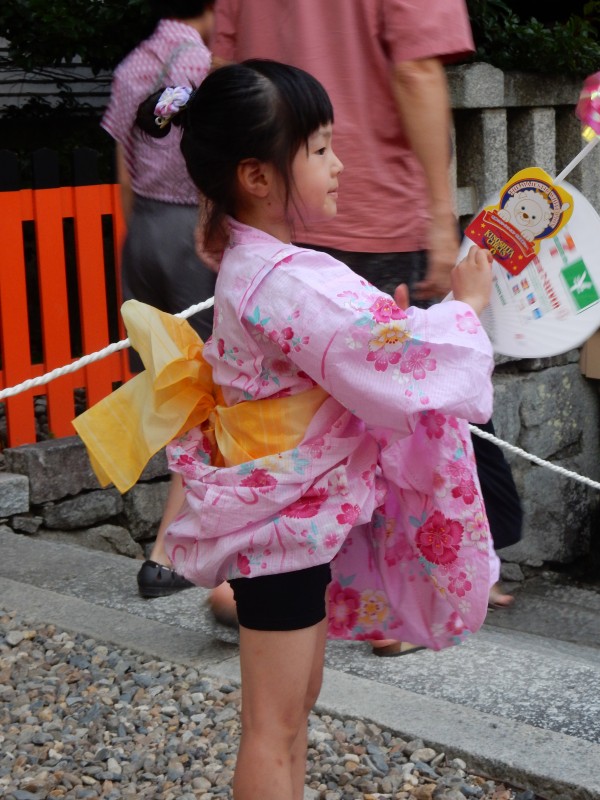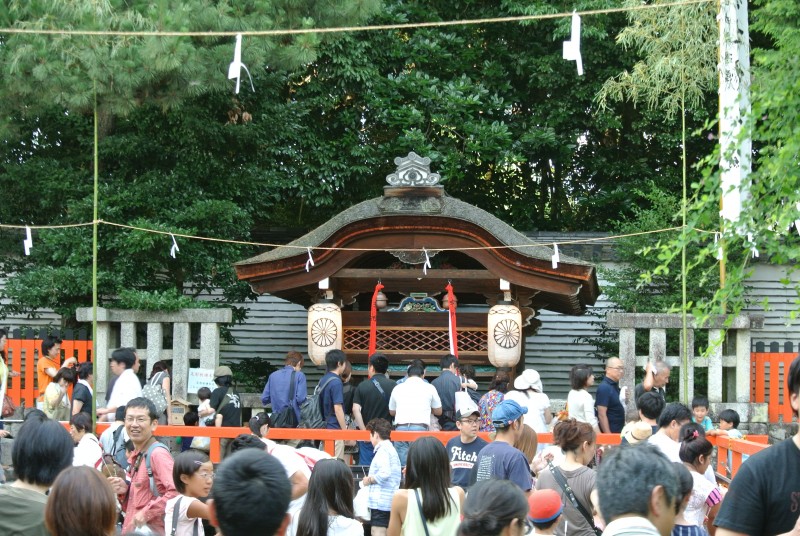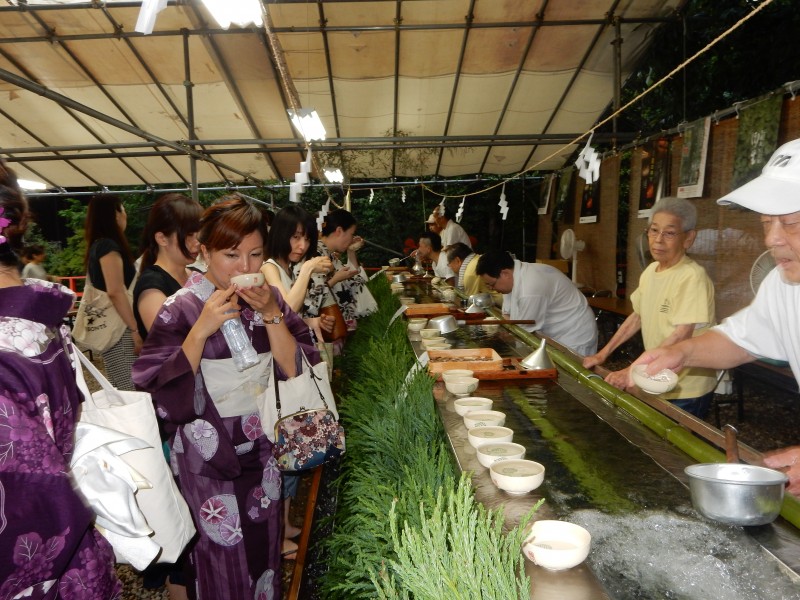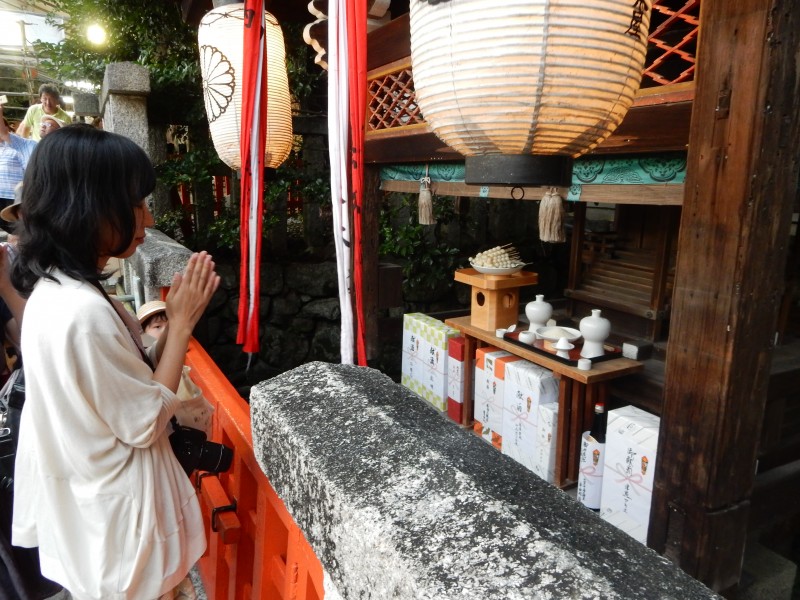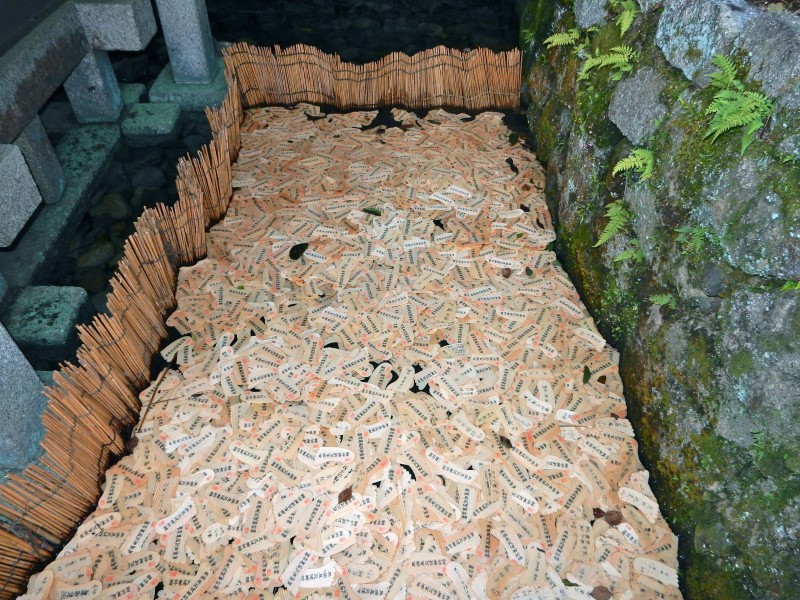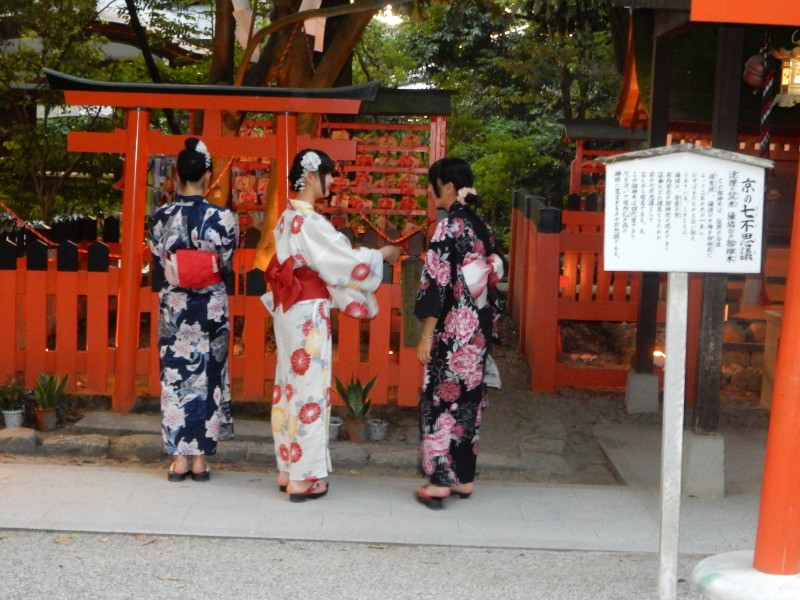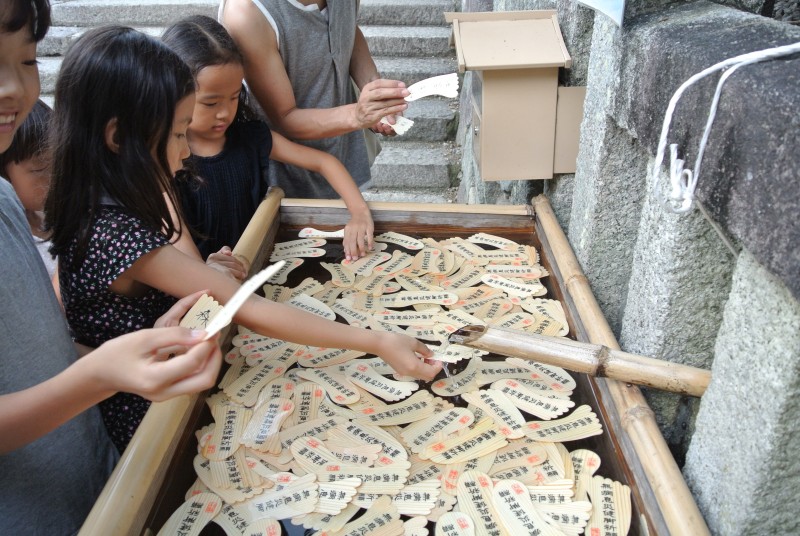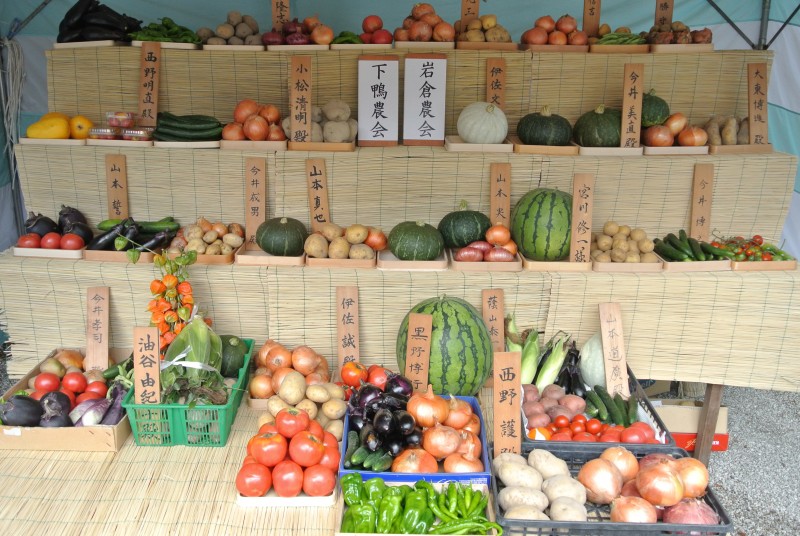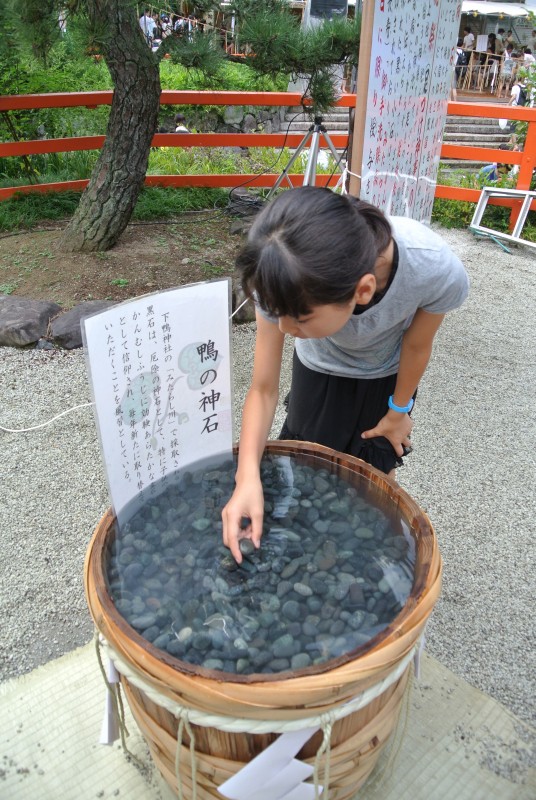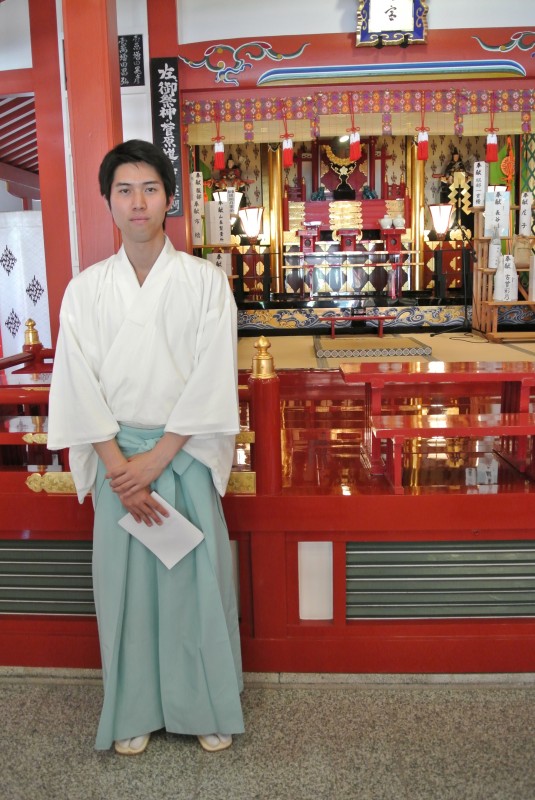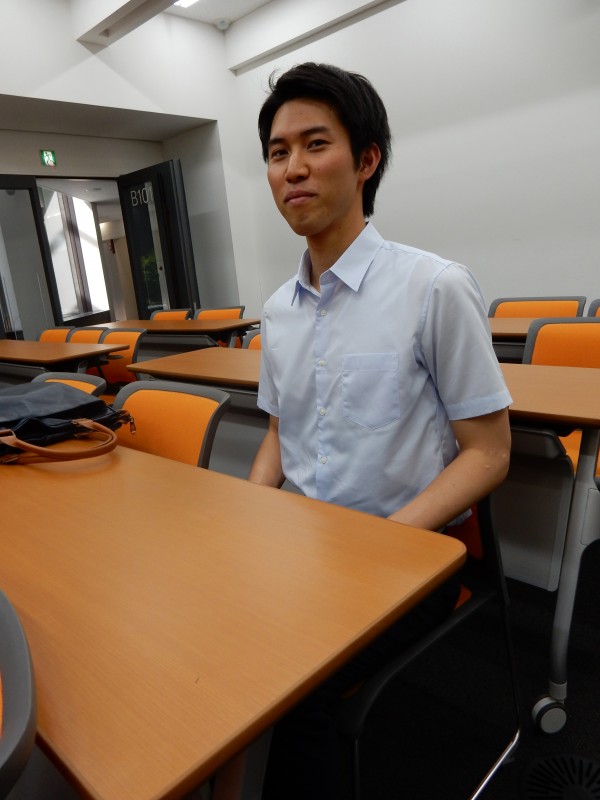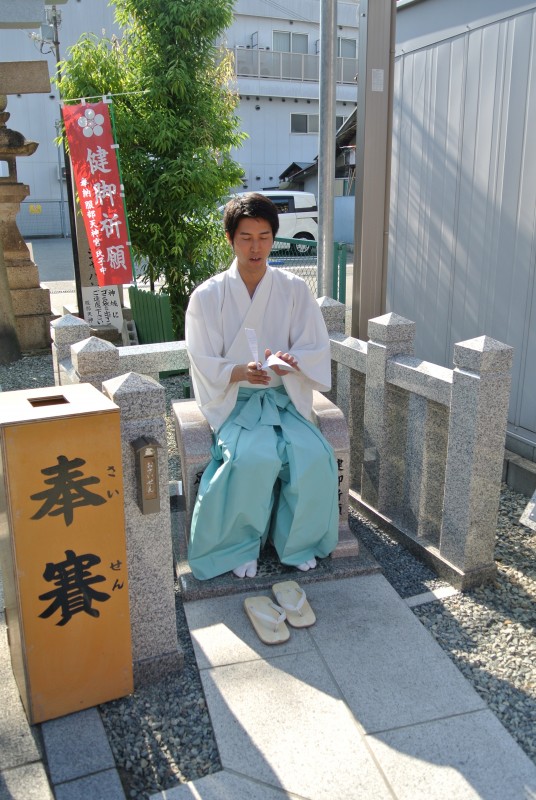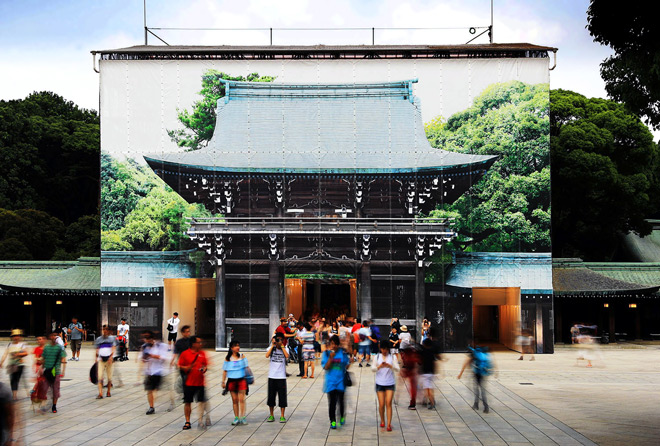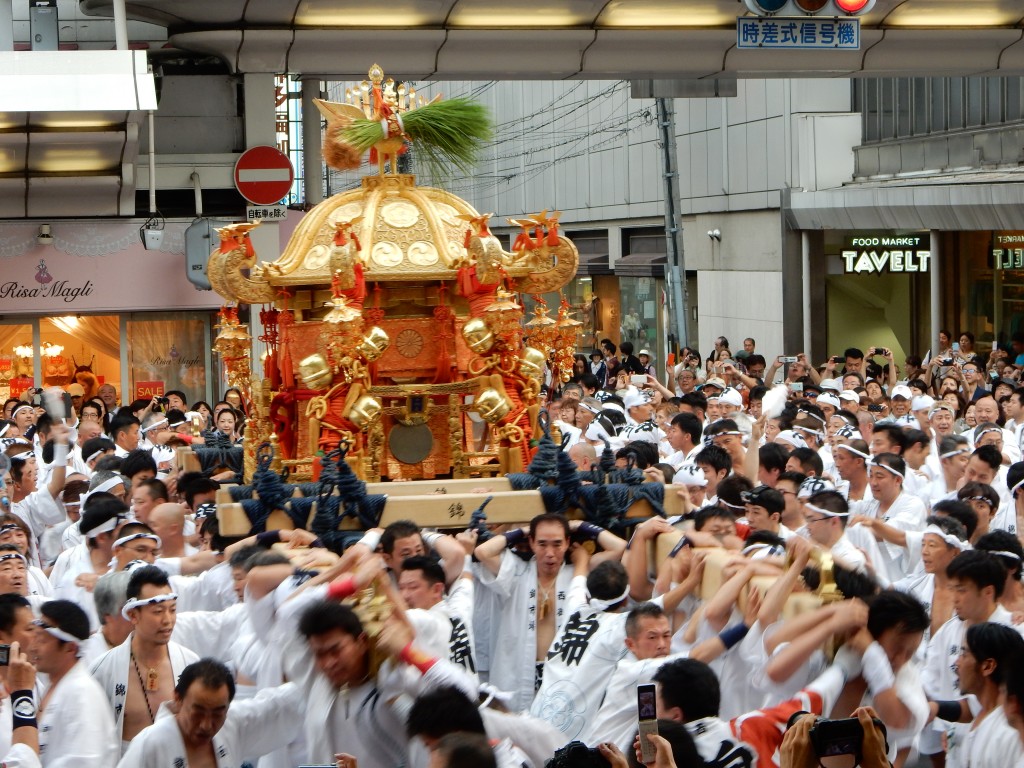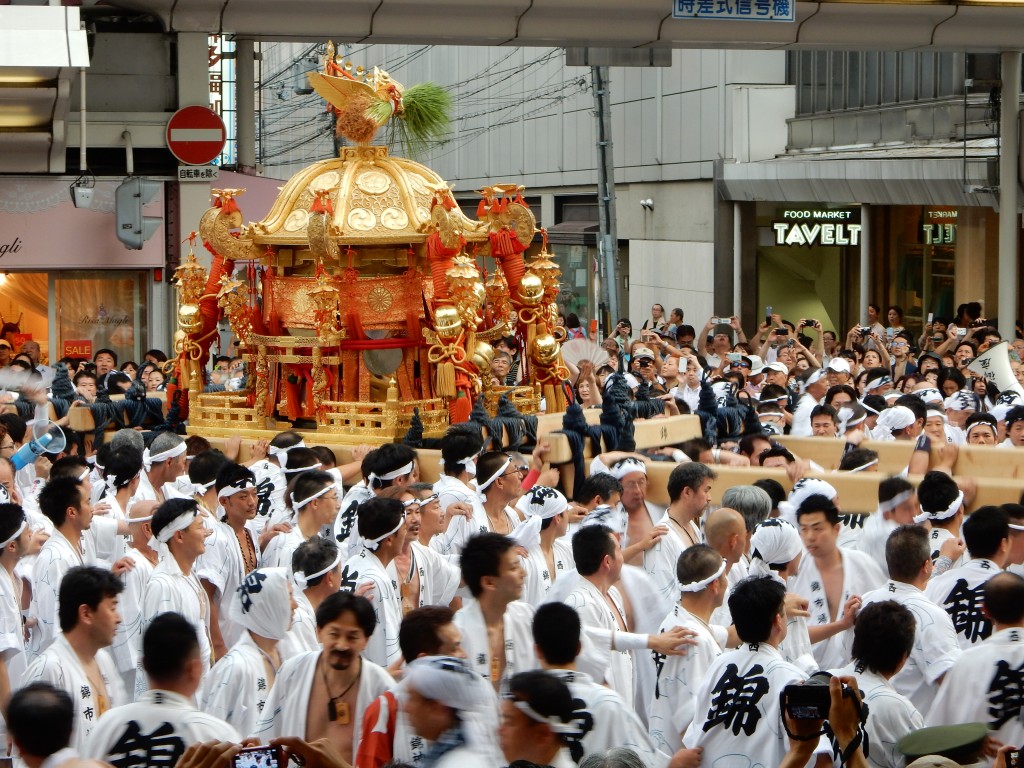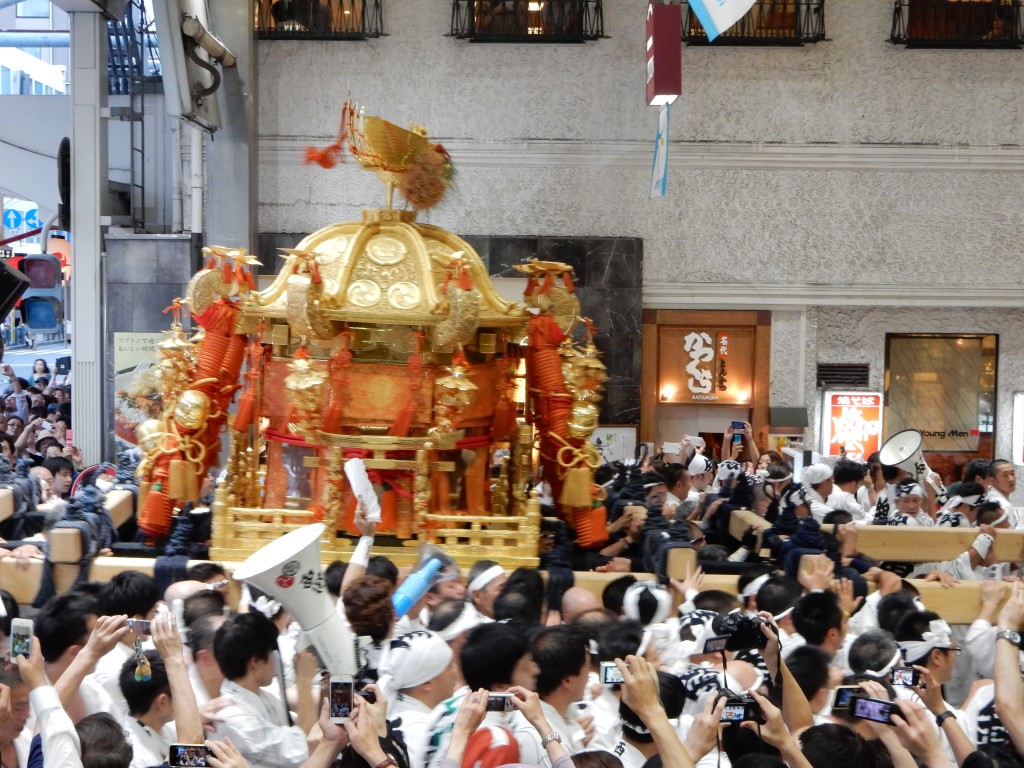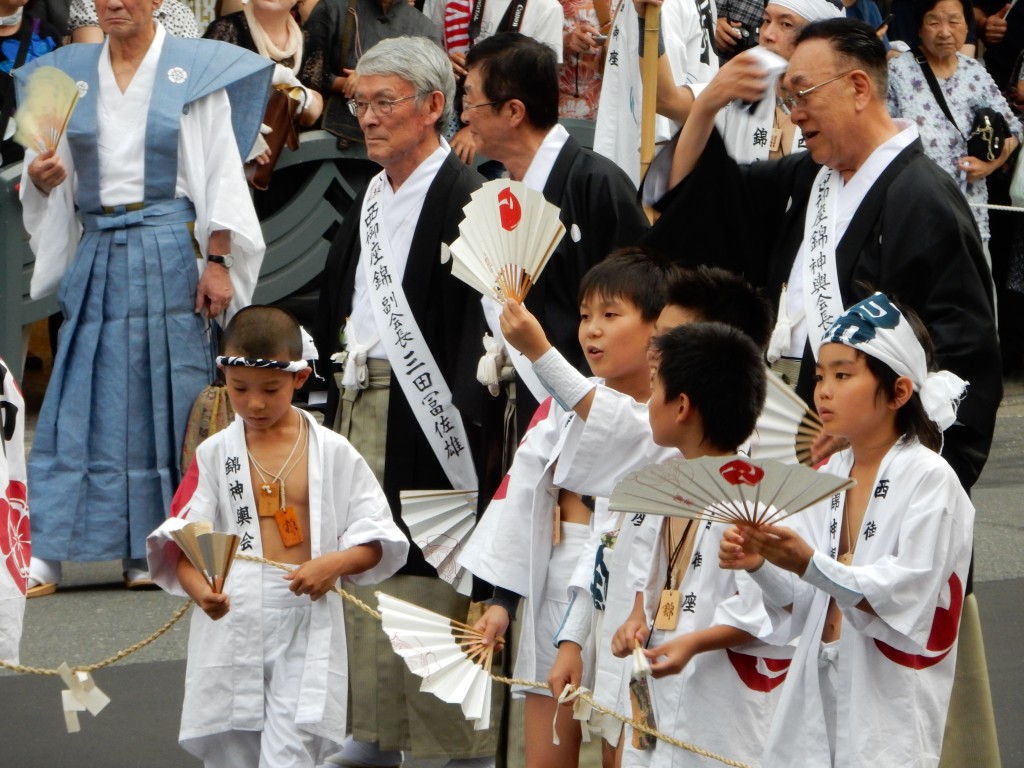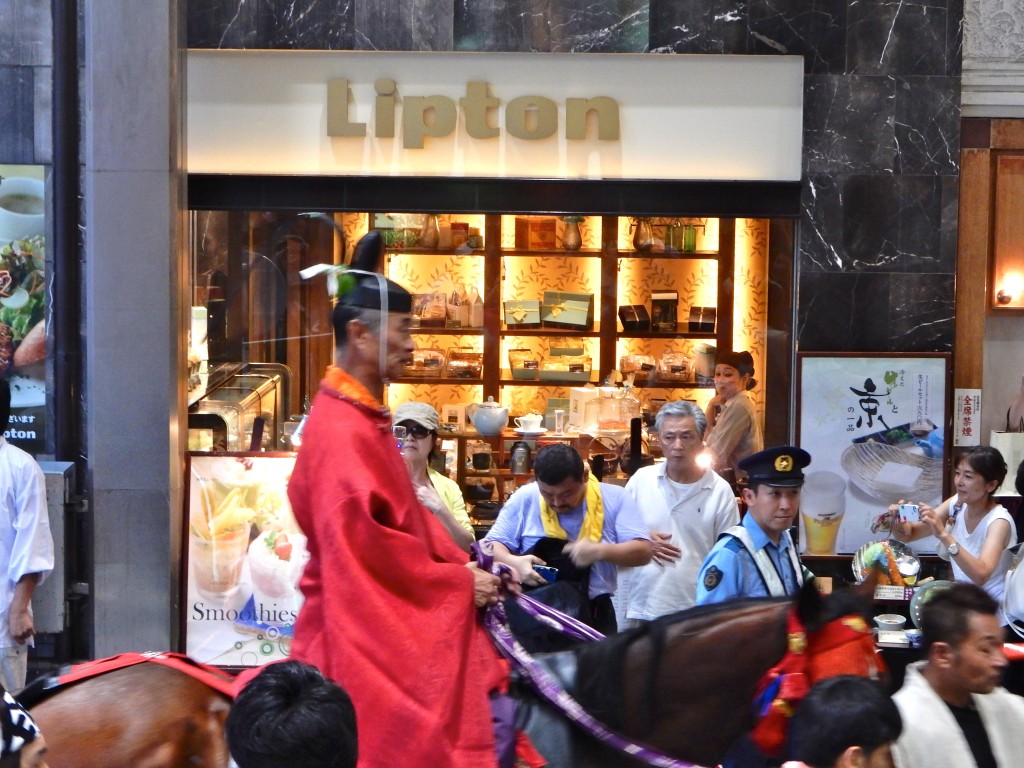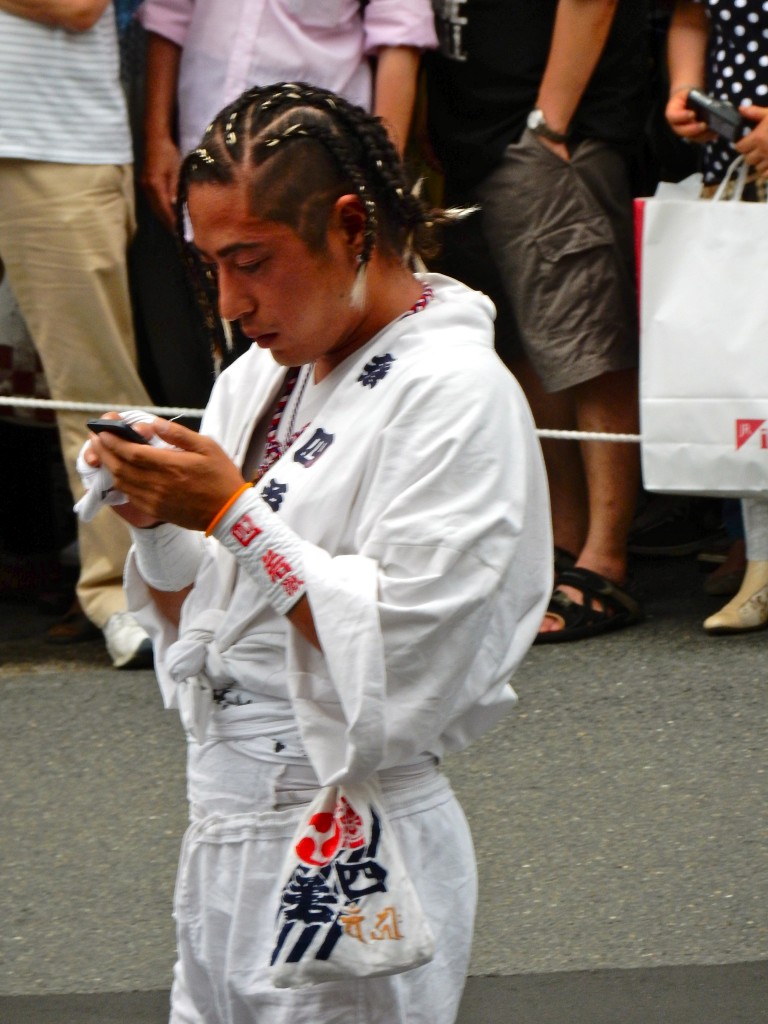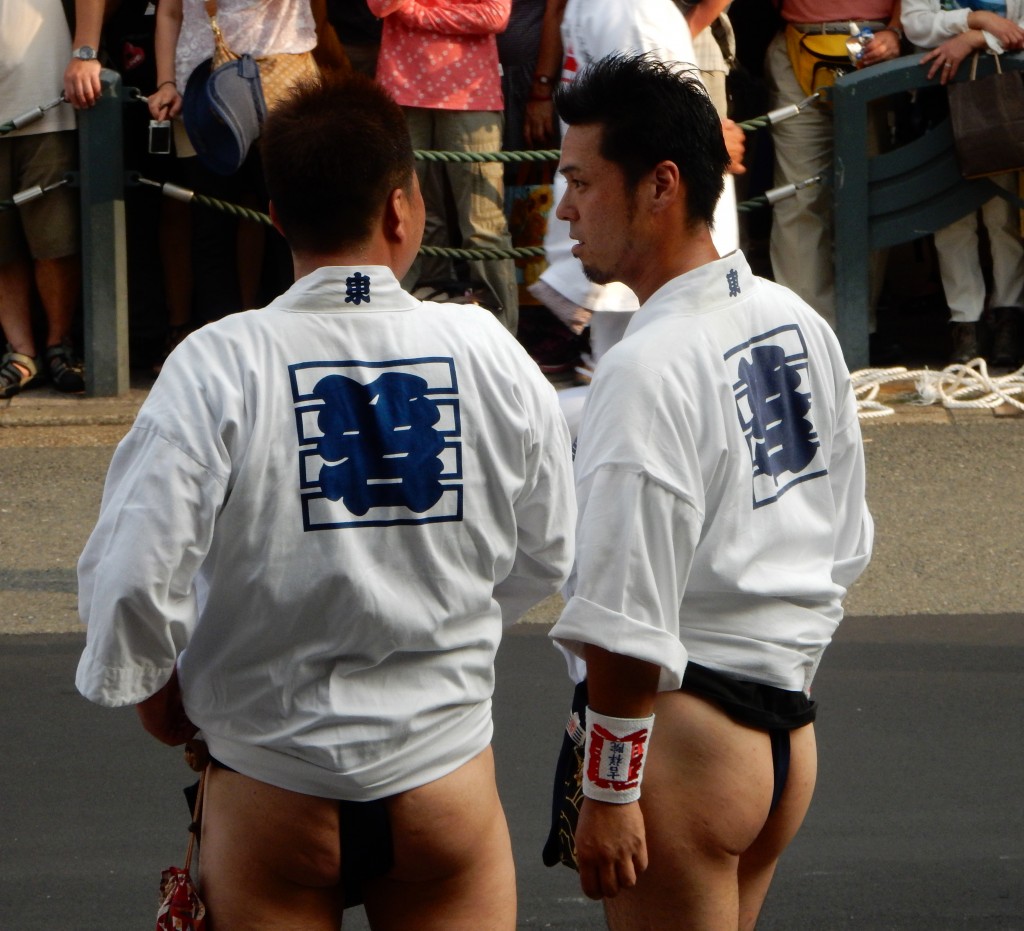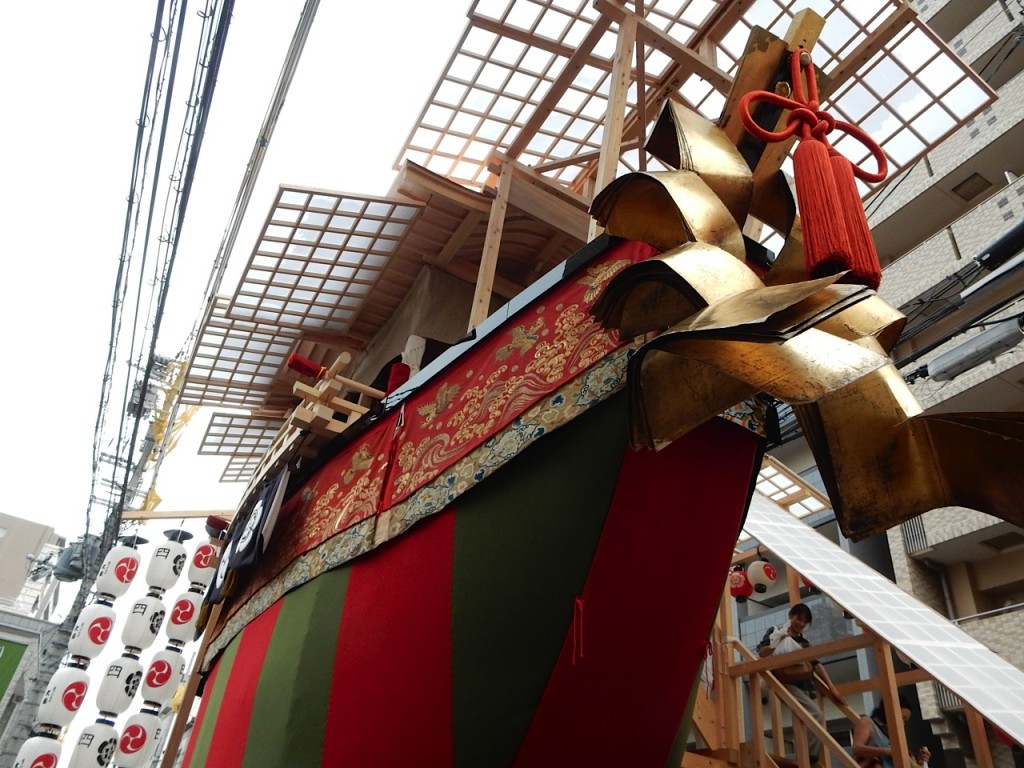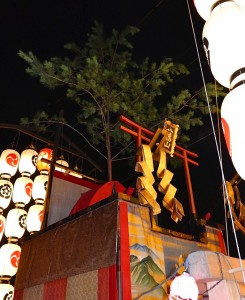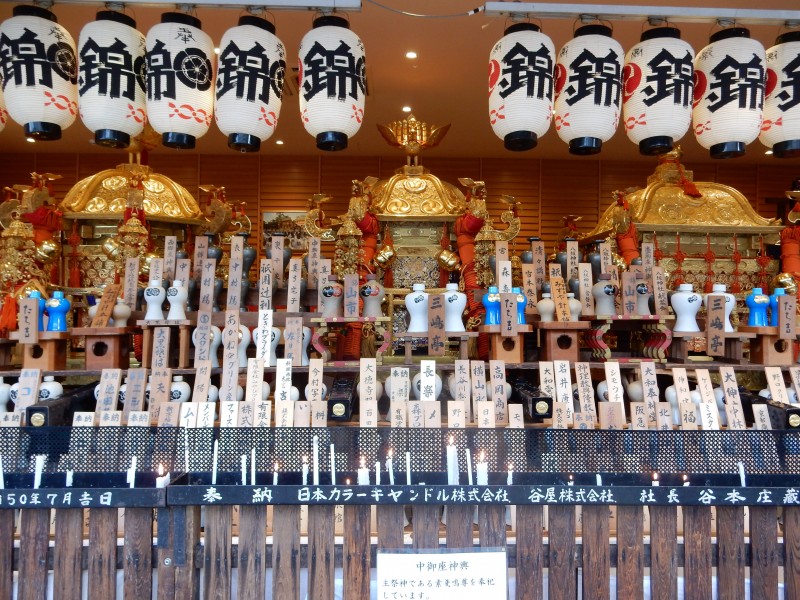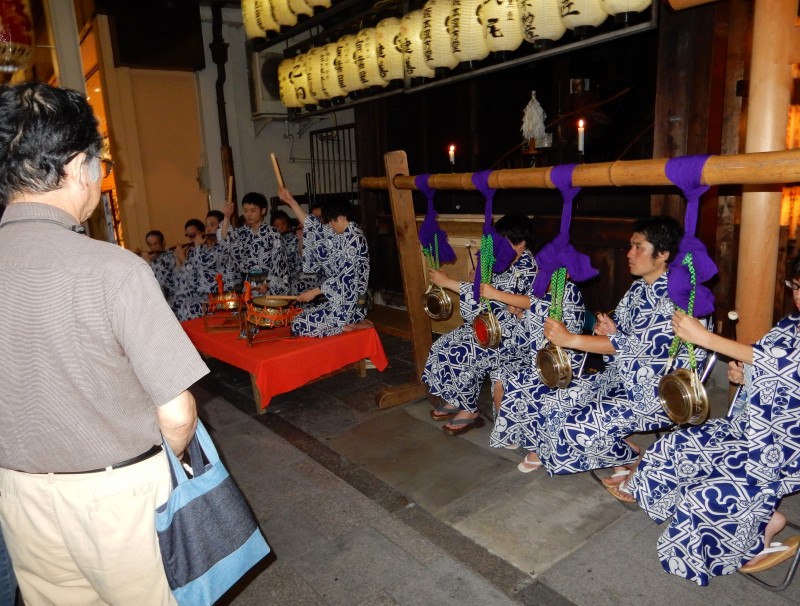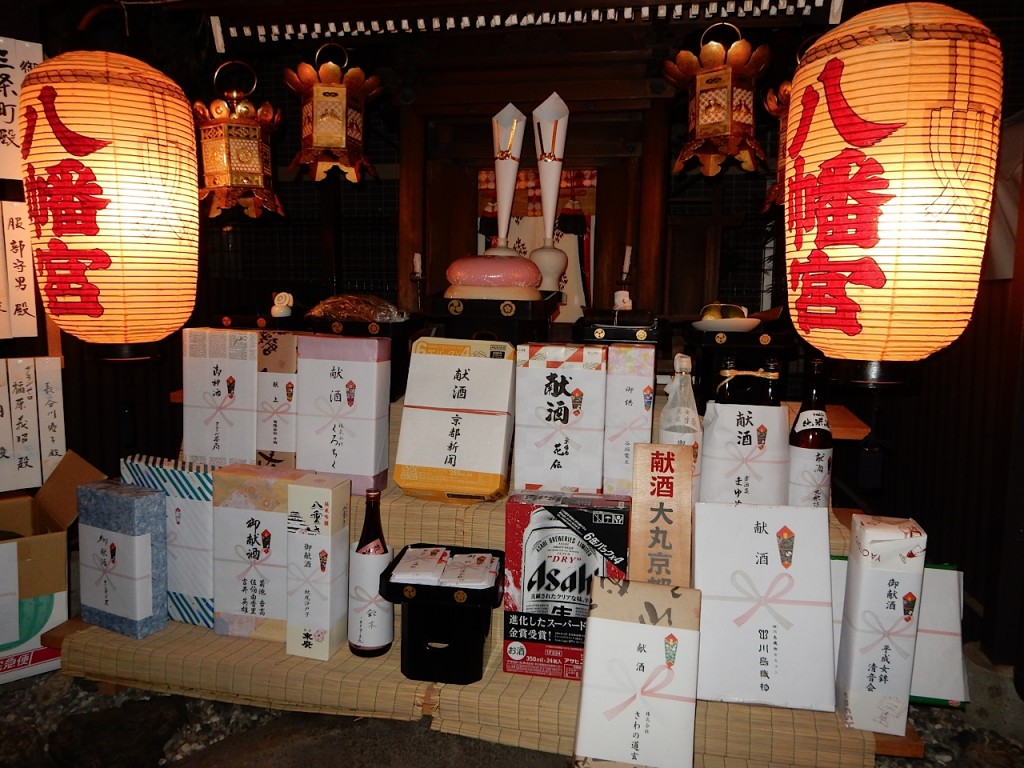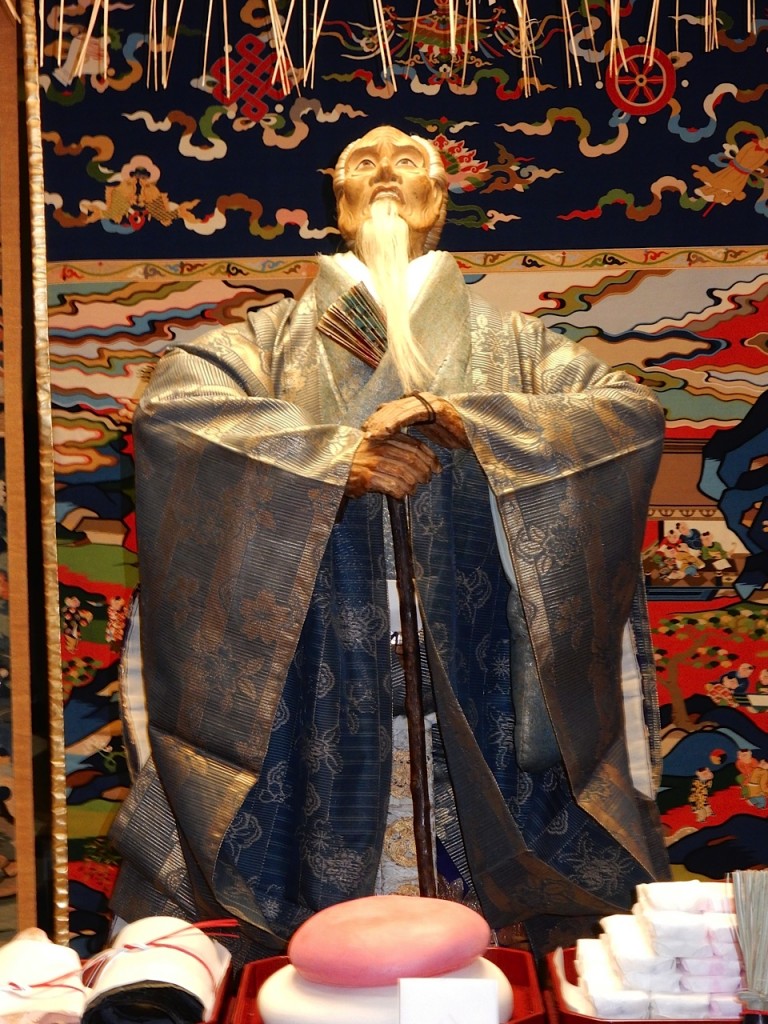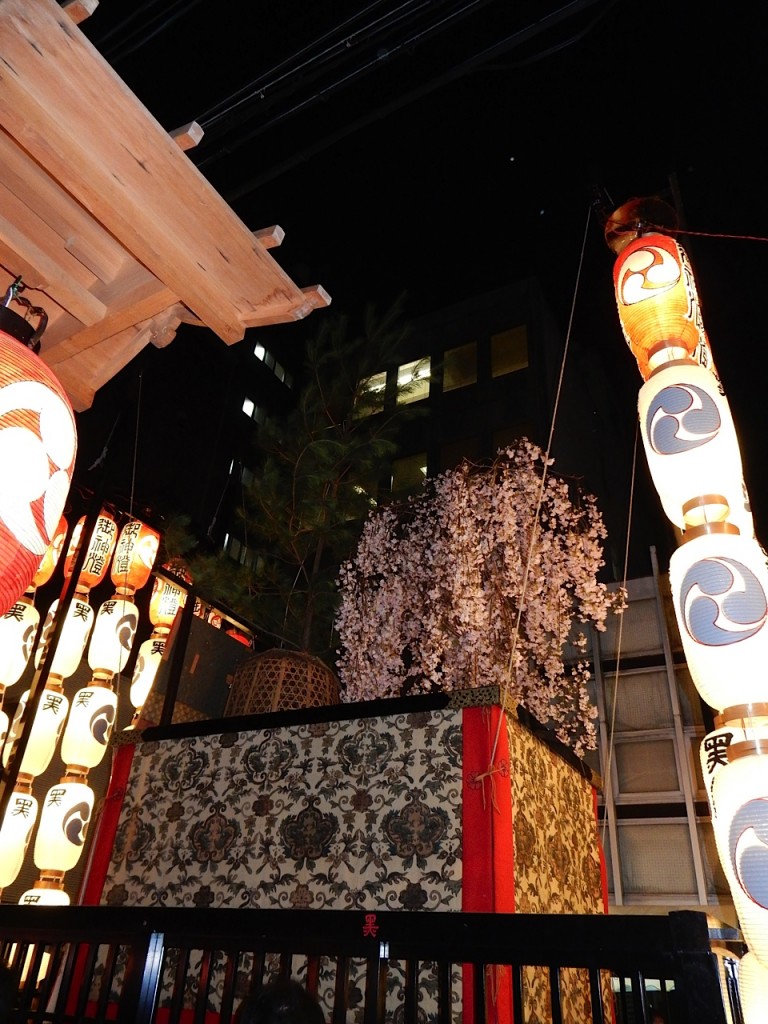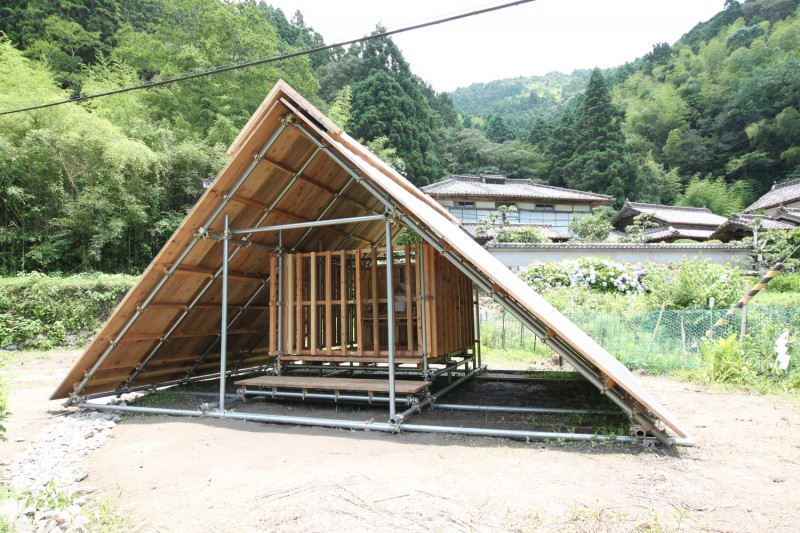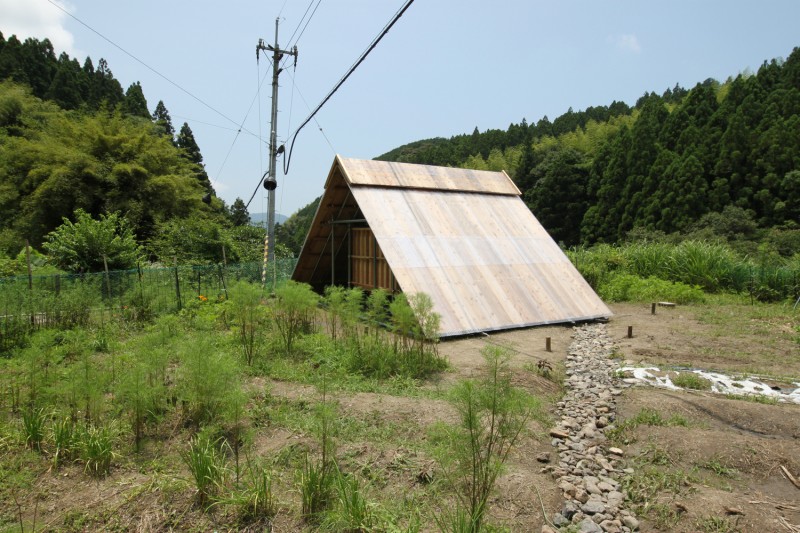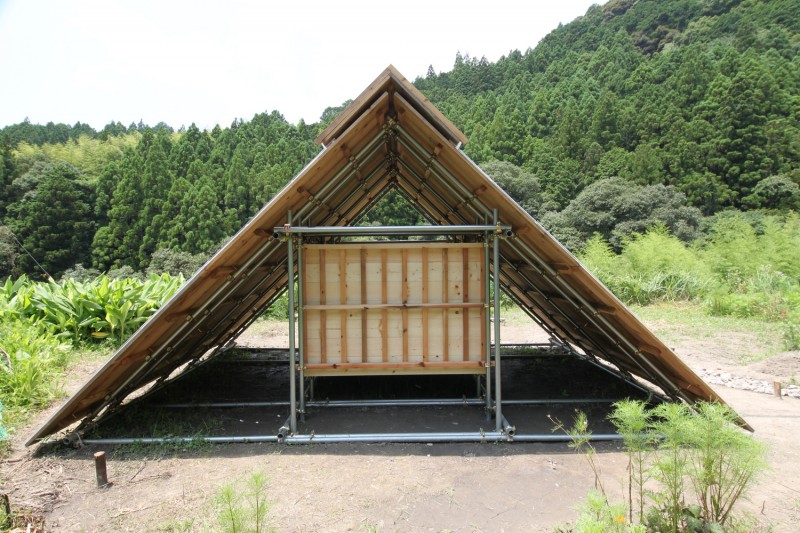
The San Marino entrance torii opens onto a wonderfully sylvan setting (all photos courtesy of the official San Marino shrine website)

The inauguration ceremony of the San Marino shrine in 2014. A hokora stands on a stone plinth, with the Japanese and San Marino flags to either side. Francesco Brigante, shrine priest, sits on the far left.
What’s happening in San Marino?
Green Shinto has received conflicting information concerning the curious case of a Shinto shrine in San Marino. Researcher Aike Rots, in an informative overview of the international outreach of Shinto, claims that the shrine is ‘officially sanctioned by Jinja Honcho’ [Association of Shrines].
However, a representative of Jinja Honcho, when asked about this said that according to the legal regulations it cannot ‘do anything official’ about a shrine in a different country with a different jurisdiction. On the other hand, Jinja Honcho has received the San Marino ambassador several times and the San Marino-Japan Friendship Society claims that Jinja Honcho has given its recognition (kounin). How far this can be taken as official sanction is unclear, but there are good reasons for suspecting that there is more here than meets the eye.

On the right is Francesco Brigante, priest of the San Marino shrine. The identity of the Japanese priest is unknown (from Tokyo Daijingu).
Origins
The shrine was officially inaugurated on June 22, 2014. A small wooden building on a large stone houses a spirit-body (goshintai), said to consist of a jewel. Accompanying the shrine is a torii, stone lanterns and cherry trees. The shrine is dedicated to the victims of the 2011 tsunami, and it acts as a site for Shinto weddings.
Though the shrine claims to be the first in Europe, Green Shinto friend Paul de Leeuw has been running a shrine in Amsterdam for over 30 years and was the first foreign priest ever. In addition, there is also a small shrine in a Buddhist temple in France.
The most curious aspect of the shrine, however, is the status of its priest, Francesco Brigante, a hotel owner, who as the photo indicates apparently has the official approval of his Japanese peers. He is promoting Shinto as an ecological religion with universal application, though how he acquired his qualification is unclear. Reports suggest that he can’t speak Japanese, which is usually enough to debar one straight away from training and qualification. The website for the San Marino shrine does not mention his training or qualifications, nor is information about this forthcoming from Japanese sites. It is therefore mysterious as to how he could be recognised as a head priest by senior members of Jinja Honcho (according to this site, he was ‘awarded a priest’s licence’).
In a video interview Mr Brigante explains how he came to be involved in the project through his friendship with the influential San Marino ambassador to Japan. He says that the reasons he took up Shinto were: 1) it is a spiritual path which has never had conflict [though kishaku haibutsu and State Shinto show its aggressive side]; 2) it is a nature religion in tune with the ecological needs of today. Part of his mission, Mr Brigante goes on to say, is to help young Japanese be proud of their heritage – a remark that makes sense in the light of what follows.
Political dimensions
One of the main people behind the project is Kase Hideaki, friend of the San Marino ambassador. His involvement is such that he wrote the English text for the official shrine website. Kase Hideaki is a founder of the flourishing Japan-San Marino Friendship Society (1000 members remarkably for a country of just 32,000). Kase Hideaki is also a prominent member of Nippon Kaigi, which boasts more members than the whole of San Marino and which wishes to reintroduce many of the features of prewar Japan.
A friend and ally of prime minister Abe Shinzo, Kase is a war revisionist who has denied that an atrocity was carried out at Nanking in 1937. (Wikipedia notes, “The denial of the atrocity is among the key missions of the influential lobby Nippon Kaigi, a revisionist organization of 35,000 members, including 15 of the 18 members of government in the 2014 reshuffle. [Prime Minister Shinzo Abe is also a member].”)
Kase Hideaki is not the only prominent rightwinger to be associated with the San Marino shrine, for amongst those attending the inaguration ceremony was the mother of Abe Shinzo. The shrine therefore is well connected with the highest nationalist circles in Japan. Priests for the ceremony were drawn from the high status Tokyo Daijingu, an Amaterasu shrine. With links to Jinja Honcho, it seems the influential Kase Hideaki has been able to push through a historic postwar first by opening up a Shinto shrine on foreign soil sanctioned by the authorities.
Does this open the gates to other foreigners wishing to become priests? Does it indicate a drive by nationalists to expand the influence of Shinto abroad? Does it, as Rots suggests, signify a trend towards rebranding the religion as environmental? (See a previous posting on greenwashing.)
For the moment no answers are forthcoming to these questions, and the authorities are keeping their cards close to their chests. Perhaps more information will be forthcoming in due course. Meanwhile, it remains to be seen where the curious case of San Marino will lead. From one of the smallest countries in the world, perhaps big things will follow…
************************
Thanks to Paul de Leeuw for pointing out that the officiating priest at the inauguration was the president of Jinja Honcho, Tsunekiyo Tanaka, chief priest of Iwashimizu Hachimangu. Curiouser and curiouser. For those who read Italian, a report of the ceremony can be found here.
